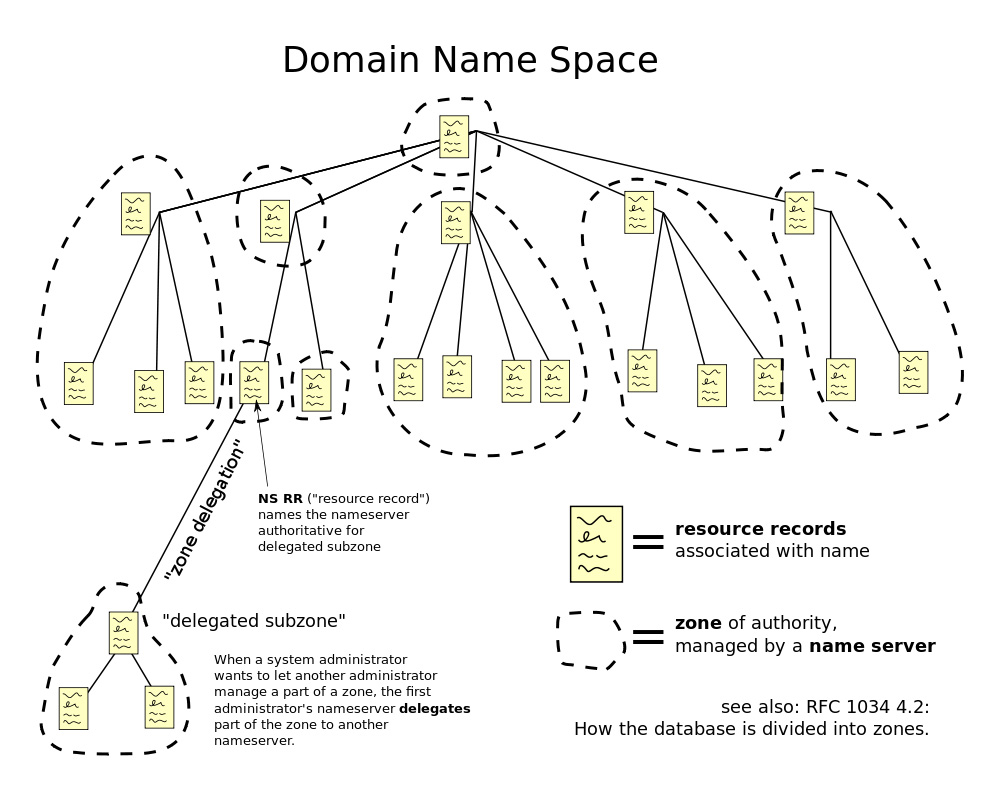
The hierarchical Domain Name System (DNS),
organized into zones, each served by a name server
Many computer users believe that the speed of the Internet experience is based on the age and configuration of their computer equipment.
However, a part of Internet system itself, not well understood by average Internet users, called the Domain Name System (DNS) servers (sometimes called name servers) also plays a central role in slow Internet connections. On the other hand, IT professionals who know how the Internet relies on DNS servers understand the importance of the DNS process, and in turn, DNS monitoring.
In order to improve uptime, functionality, and speed, website owners can test the complete line of Dotcom-Monitor services – including DNS monitoring, free. To run an instant test, visit: Remote Traceroute (select Trace Style: DNS).
DNS: The Basic Process
DNS servers (usually associated with your Internet Service Provider (ISP)) convert the meaningful website names (URLs) we use (i.e. wikipedia.org) to numerical IP addresses (i.e. 208.80.152.201) that are needed to direct traffic to the appropriate web site. This is supposed to be a fast, seamless conversion, but it doesn’t always work that way. A poor DNS server response can mean slow loading web pages, DNS timeouts, and email problems.
DNS Monitoring Provides a Missing Piece of the Puzzle

{ photo credit: wilhei55 }
While DNS servers may not be the most obvious or frequent cause of Internet problems, DNS server issues do crop up and are worthy of attention. These servers can fail or be slowed by other hardware and connection issues. Internet problems can be frustrating for home users, but this connection is critical for many enterprises. Businesses that rely on a fast, functioning Internet service should be aware of how DNS server issues impact that service.
The loss of big time DNS servers may occasionally make the news, like GoDaddy in September 2012 and AT&T in August 2012, but smaller or regional providers may have a DNS loss of service or slow downs that will, obviously, go unreported by the media. Customers may be largely unaware of the DNS service levels they are routinely being provided, or when interruptions are caused by DNS servers.
The only way to know how well or how reliably DNS servers perform is to make consistent, regular objective tests and measurements over time. While DNS servers can be verified manually, that is not a practical solution. Manually checking the DNS servers a few times a week, or even a few times a day, simply does not provide enough data to accurately judge performance, nor does it quickly alert website owners to problems. Automatic DNS monitoring gives website owners the information needed.
Read More in DNS Monitoring Improves Web Site Speed and Reliability – Part 2…
To run a free DNS test, visit: Remote Traceroute (select Trace Style: DNS).

